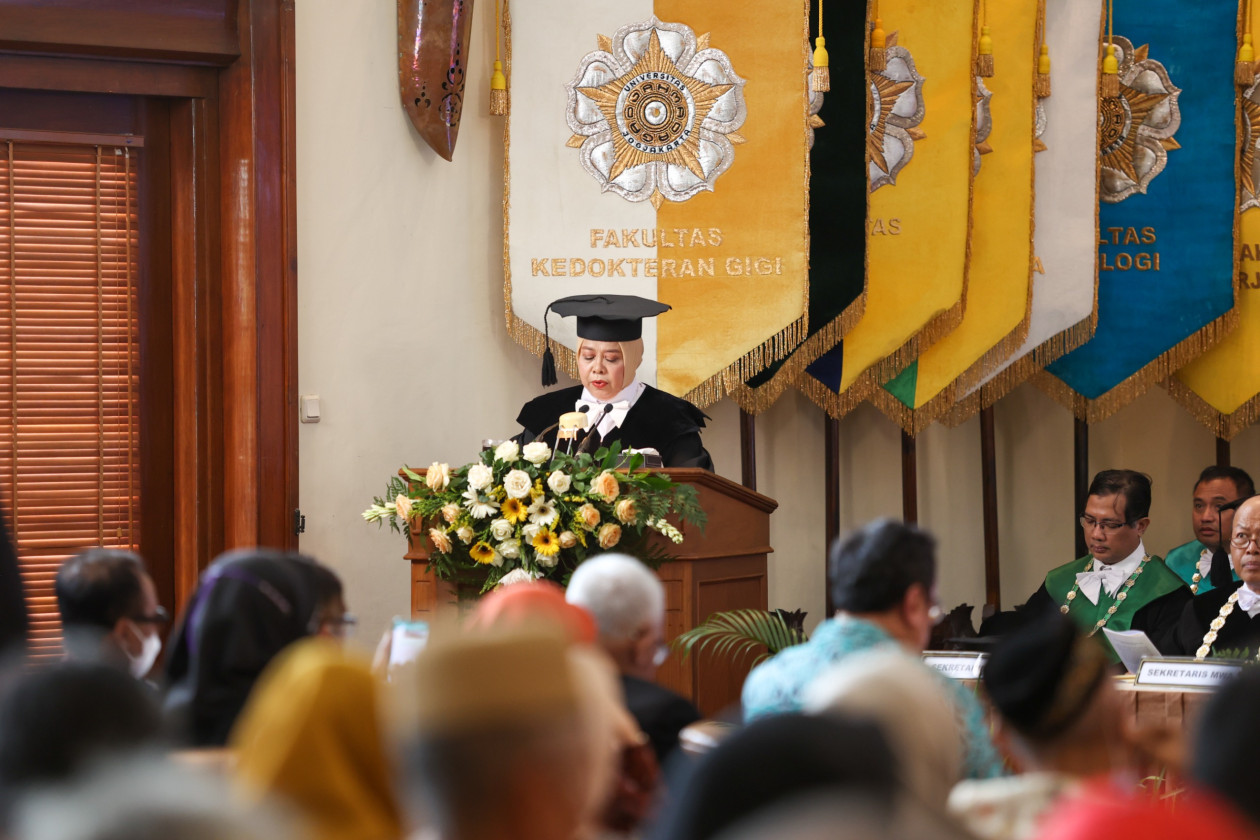The world of dental restoration treatments boasts diverse materials, and the widely embraced composite resin stands prominently among them.
This material is favored for its exceptional aesthetic appeal, direct restorative capabilities, and impressive mechanical, physical, and biocompatible properties.
At the inauguration ceremony where Professor Siti Sunarintyas was officially recognized as a professor specializing in dental composite biomaterials, held on Thursday (Jan. 4) at the UGM Senate Hall, she delved into the nuanced world of composite resin material.
Her enlightening discourse, titled “Composite Resin Material for Dental Treatment: From the Past to the New Era,” provided a comprehensive journey through the evolution of this critical material.
“Composite resin material has solidified its presence in the realm of dentistry, finding applications in various procedures such as cavity covering treatments, intra and extra-coronal restorations, temporary restorations, veneers, prosthetic elements, dental cement, dental posts, and beyond,” she elaborated.
Professor Sunarintyas elucidated that using composite resin material in dentistry became prominent in the 1960s.
Describing it as a restoration material, she outlined its composition, consisting of four key components: an organic polymer matrix, inorganic filler particles with varying compositions, sizes, and shapes, an adhesive material forming a chemical bond between the matrix and filler/reinforcement, and an activator and initiator system facilitating resin polymerization.
The contemporary choice for the composite resin matrix in commercial products is bisphenol A glycidyl methacrylate (bisGMA). With its long and robust difunctional monomer chain, benzene rings, and cross-linked polymer, the bis-GMA matrix boasts high viscosity.
Looking toward the future, Professor Sunarintyas emphasized the escalating trend in composite resin material applications across diverse dental fields.
She advocated for structured studies that intricately link material characteristics with their applications to enhance the material’s quality concerning chemical, physical, mechanical, and biological aspects.
While composite resin material is hailed for its bio-inert properties and its ability to replace tooth structures seamlessly, the professor highlighted future expectations.
She anticipates the evolution of composite resin materials into bioactive agents capable of therapeutic functions that inhibit caries, disrupt biofilms, and safeguard adjacent tooth structures.
These advancements elevate restoration resistance and establish harmony within the oral cavity environment.
“Composite resin material still needs continual development to transform into a resilient, functional, and safe dental treatment material,” she concluded.
Author: Gloria
Photographer: Donnie






